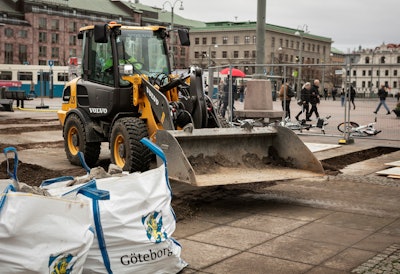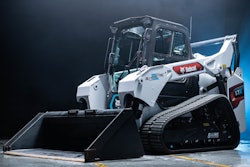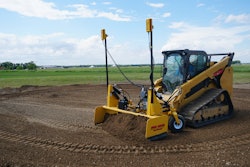
To better understand management of electric construction equipment on a jobsite, Volvo CE is testing every aspect of how electric machines work in a big city – from charging infrastructure to energy supply and more – through its Electric Worksite research project.
Launched earlier this year in Gothenburg, Sweden, E-Worksite will help set the global benchmark for electric jobsites and test electric machines’ specific requirements across different tasks.
Urban environments may stand to benefit the most from electric equipment. The low-noise, zero-exhaust-emissions machines have less impact on residents living nearby, as well as help cities meet sustainability goals. Plus, charging stations are much more readily available than in rural areas.
“We are already delivering electric solutions that offer zero exhaust emissions, reduced noise and a much more comfortable work environment, but that is only half the challenge,” says Carolina Diez Ferrer, head of advanced engineering programs, Volvo CE. “We are committed to also helping our customers reach their own climate goals through complete site solutions with a holistic sustainable approach. This exciting partnership allows for a comprehensive investigation into the varied infrastructure and support-system needs for electric machines to really perform to their best, no matter the task at hand.”
The research project is funded by the Swedish Energy Agency, with Volvo CE working in close collaboration with multiple municipalities, cities and academic and industry partners. It will explore the site requirements for electromobility over the next two years across a variety of applications.
 The L25 Electric offers zero exhaust emissions and low noise.Volvo Construction Equipment
The L25 Electric offers zero exhaust emissions and low noise.Volvo Construction Equipment
“To achieve the City of Gothenburg’s climate goals we need to reduce greenhouse gases, and we see that electric construction machines will help us in this environmental work by reducing local emissions of both nitrogen-oxides and particles, as well as noise,” says Peter Lindgren, business developer electrified transports with the Gothenburg Urban Transport Administration. “The partnership as part of the Electric Worksite is of great value, and we see that this research project has the capacity required to speed up our green transformation”.
The path to widespread adoption of electric construction equipment is complex, but project planners hope to solve some of the issues tied to cost, energy efficiency, infrastructure and support systems, legislation and regulatory frameworks, and general acceptance of the technology through the project.
“We want to collectively take on the complex task of understanding the electric ecosystem and guide our customers on how best to move forward in this transition,” says Niklas Lindblom, project manager, advanced engineering programs, Volvo CE. “Through this partnership we will be connecting all parts of the customer value chain in order to build up shared knowledge and innovation capabilities to ensure our electric future is fit for any construction challenge.”











